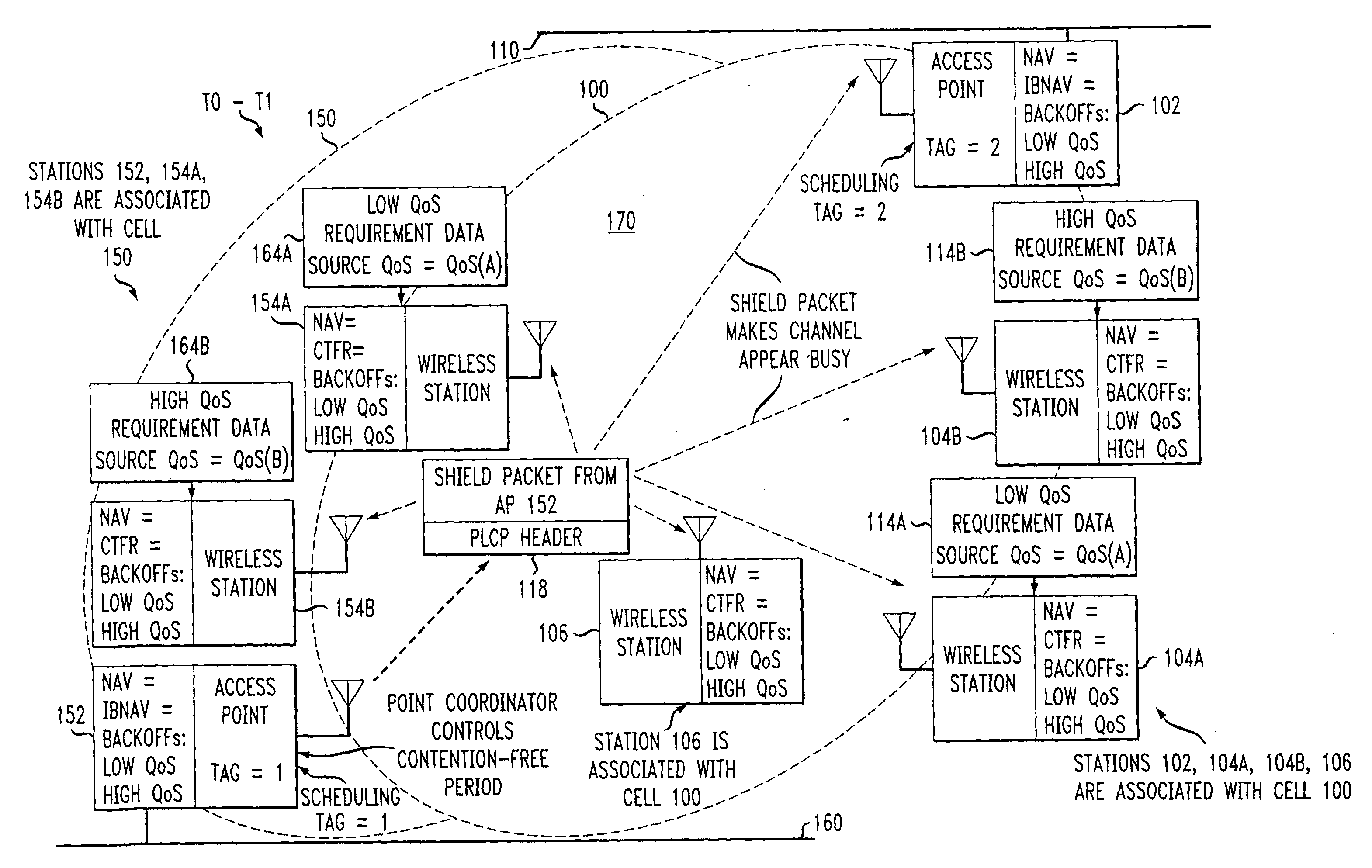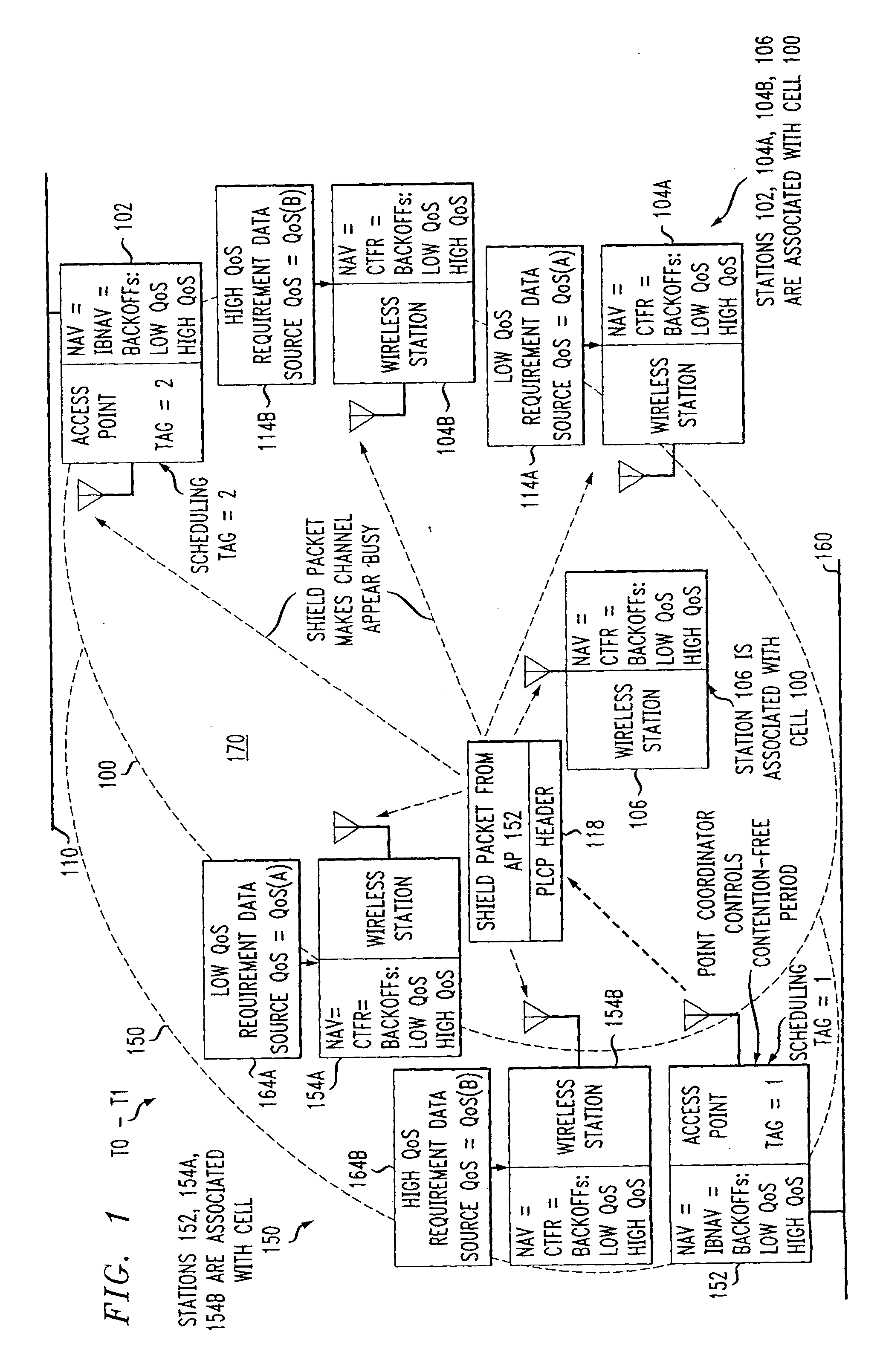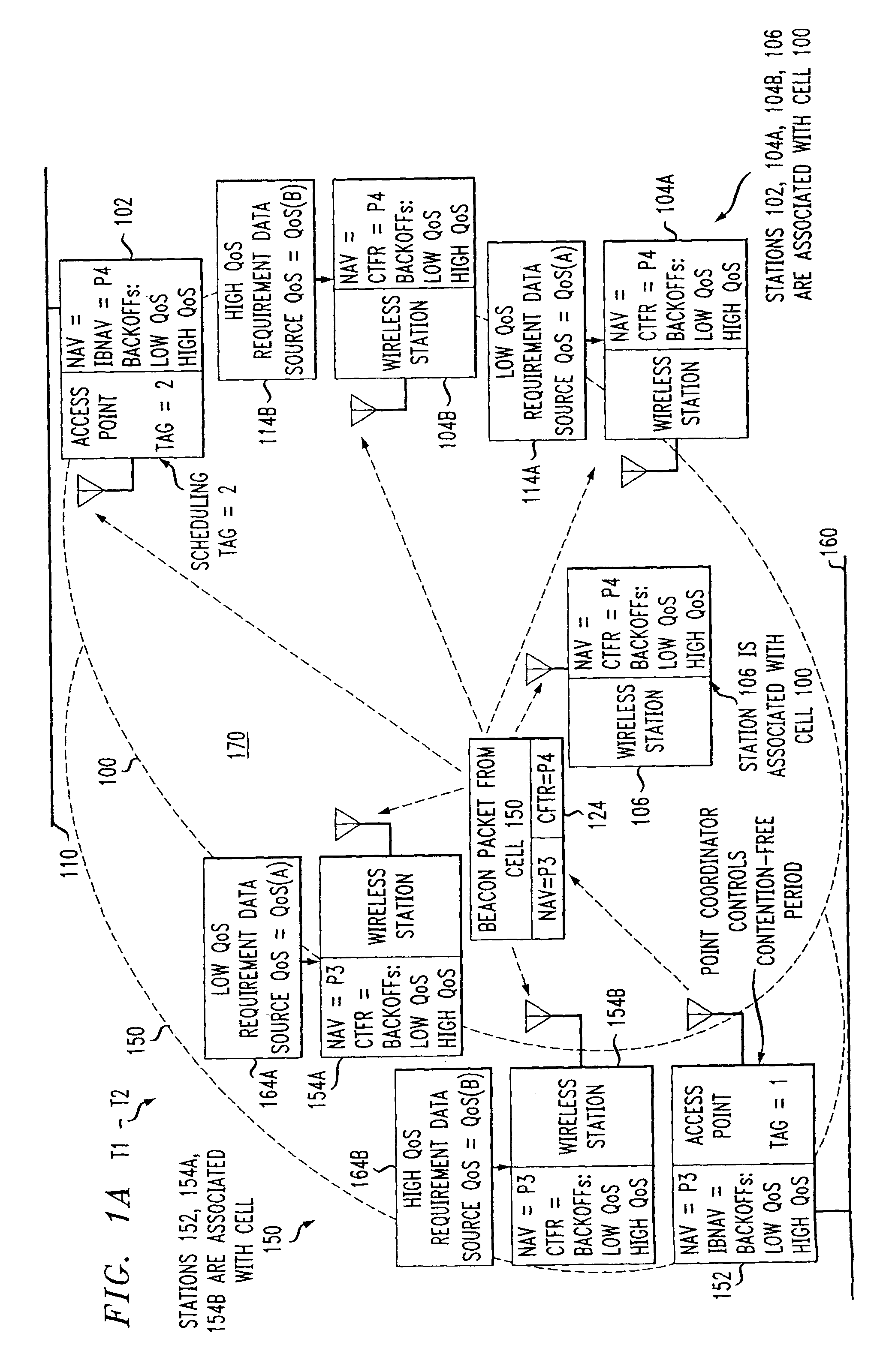Preemptive packet for maintaining contiguity in cyclic prioritized multiple access (CPMA) contention-free sessions
a packet and contiguity technology, applied in the field of wireless cells, can solve the problems of preventing back-to-back re-transmission, protocol instability, and protocol also suffering from hidden terminal problems
- Summary
- Abstract
- Description
- Claims
- Application Information
AI Technical Summary
Benefits of technology
Problems solved by technology
Method used
Image
Examples
Embodiment Construction
[0058] The invention disclosed broadly relates to telecommunications methods and more particularly relates to wireless cells that have overlapping stations contending for the same medium. An inter-cell contention-free period value is assigned to a first access point station in the first cell, associated with an accessing order in the medium for member stations in the first and second cells. The access point in the first cell transmits an initial shield packet to deter other stations from contending for the medium. The access point then transmits a beacon packet containing the inter-cell contention-free period value to member stations in the second cell. A second access point in the second cell can then delay transmissions by member stations in the second cell until after the inter-cell contention-free period expires. The beacon packet sent by the first access point station also includes an intra-cell contention-free period value, which causes the member stations in the first cell to...
PUM
 Login to View More
Login to View More Abstract
Description
Claims
Application Information
 Login to View More
Login to View More - R&D
- Intellectual Property
- Life Sciences
- Materials
- Tech Scout
- Unparalleled Data Quality
- Higher Quality Content
- 60% Fewer Hallucinations
Browse by: Latest US Patents, China's latest patents, Technical Efficacy Thesaurus, Application Domain, Technology Topic, Popular Technical Reports.
© 2025 PatSnap. All rights reserved.Legal|Privacy policy|Modern Slavery Act Transparency Statement|Sitemap|About US| Contact US: help@patsnap.com



